Like a lot of virtual worlds observers, I’ve written repeatedly on the need for virtual worlds like OpenSim and Second Life to be simpler to use – ideally web browser based. Kitely, a project underway since 2008, takes a big step toward achieving that by making the establishment of an OpenSim grid nearly as simple as it gets.
It took me under ten minutes to get set up in Kitely. Here’s how:
1. Log in via Facebook Connect.
2. Install the Kitely plugin (Mac users note: Safari or Opera aren’t currently supported by the Kitely plugin at present, you’ll need to use Firefox or Chrome).
3. Create a world and choose if you want to invite anyone from Facebook groups you are part of:
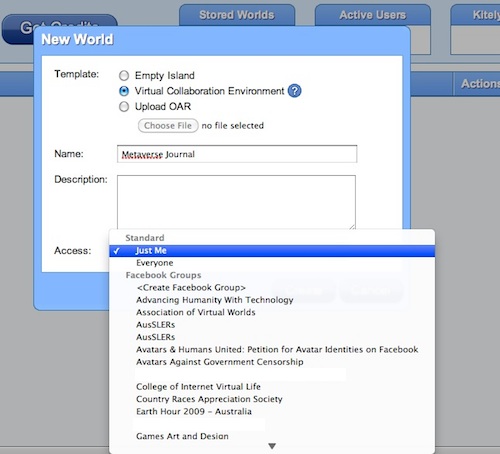
4. Type a name, optional description and type of world you want to start with.
5. Click on ‘Enter World’ and your SL browser will launch (Mac users again – there’s a known bug whereby your username and password are all entered in the Name field of the SL browser – you just need to type in that password and delete it from the end of your name)
5. Voila – you’re now on your own island / collaborative space:
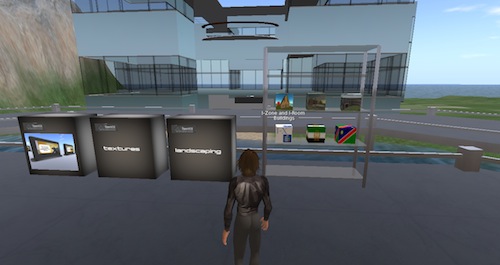
6. Three minutes later and I had my venerable log cabin rezzed on my island:
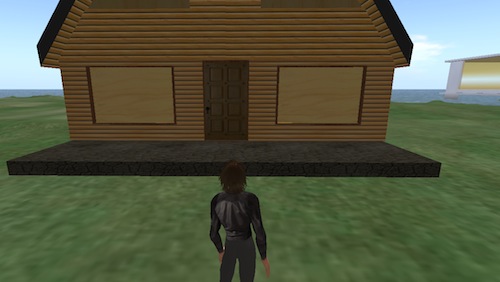
Kitely is currently in beta, and the currency used is called a KC. As part of the beta you get 50 KCs currency to start with and it costs 1KC per day to keep each world you create. On the proposed maximum discount structure that works out at US ten cents per month. It’s an attractive proposition for someone not wanting the hassle of creating their own grid from scratch and its more than competitive with other providers. The support functionality is fairly well set up and responsive from what I’m seeing.
There’s still plenty of kinks to iron out but Kitely is a superb snapshot of what is going to be required for wider adoption of virtual environments: simplicity and integration with other platforms. I’d be interested to hear from anyone who has experience in creating content in OpenSim as to your thoughts on comparability to other offerings. It’s also worth having a read through the Kitely FAQ, which covers a lot of stuff including the approach to intellectual property (essentially the same as Second Life) and the Terms of Service.
Thanks to a number of Metaverse Journal twitter followers for the heads-up.
Update: With thanks to reader Psx_kai, who pointed out a key fact I’d missed in the story. The pricing I described was correct but didn’t include the extra charge of US$0.20 per minute for each visitor to your world. That’s certainly going to get pricey after a while although it seems it’s going to be an option to earn a fair whack of free KCs. On the upside, the ‘pay for what you use’ model is something that can work well for those wanting intermittent events without the ongoing higher monthky costs on say Second Life.

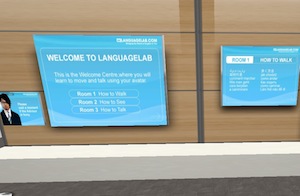

 Kyle: We had hoped the AWG group in SecondLife would mature as a basis for interop. Why not start with your most compatible world after all? But they are not keeping up with the speed of the Opensim dev’s with items like Hypergrid now linking any Opensim world. So since we cannot get hands on to help there on the SecondLife side we have decided to experiment with our own interop focusing on the access we now haveto the worlds core database store. We can get to the data now so anything becomes possible.
Kyle: We had hoped the AWG group in SecondLife would mature as a basis for interop. Why not start with your most compatible world after all? But they are not keeping up with the speed of the Opensim dev’s with items like Hypergrid now linking any Opensim world. So since we cannot get hands on to help there on the SecondLife side we have decided to experiment with our own interop focusing on the access we now haveto the worlds core database store. We can get to the data now so anything becomes possible.

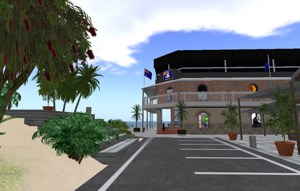 1. Need to create terrain on an OpenSim grid?
1. Need to create terrain on an OpenSim grid? 

Recent Comments